Analyzing the Cost of 4K Gaming PCs
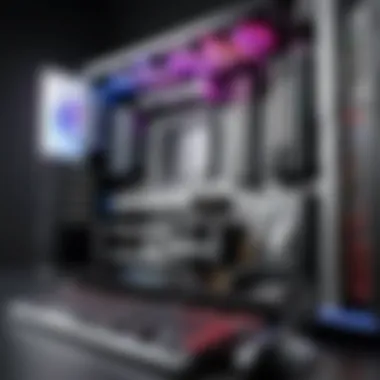

Intro
The world of 4K gaming has become a tantalizing frontier for gamers and tech enthusiasts alike. With graphics that offer breathtaking detail and immersion, assembling or purchasing a 4K gaming PC is no small feat. It requires navigating a tangled web of components, pricing trends, and performance metrics. Understanding the financial aspects surrounding these systems is crucial—not just for decision-makers in IT but also for hobbyists looking to optimize their gaming rigs within their budget constraints.
From powerful GPUs to high-speed RAM, each component offers a different layer of cost dynamics that can significantly affect the overall price. As such, this comprehensive analysis aims to flesh out essential insights on the costs tied to building or buying a 4K gaming PC, helping readers to make informed choices.
Features Overview
When delving into 4K gaming, the features of the components you select can make or break the experience.
Key Specifications
- Processor: A capable CPU like the AMD Ryzen 9 5900X or Intel Core i9-11900K is crucial for handling the demands of 4K gaming. These processors often come with a hefty price tag but offer impressive performance.
- Graphics Card: The heart of gaming, GPUs such as the NVIDIA GeForce RTX 3080 or AMD Radeon RX 6800 XT stand tall. In a 4K setup, the right GPU decides whether the gaming experience is fluid or frustrating.
- RAM: For smooth multitasking and gaming, 16GB of high-speed RAM is typically the minimum requirement. Models from Corsair and G.Skill often deliver better performance.
- Storage: Fast storage solutions like NVMe SSDs not only load games quicker but also enhance overall system responsiveness, making them worth the investment. A larger SSD paired with an HDD for secondary storage is common.
Unique Selling Points
In an increasingly competitive market, various features serve as unique selling points.
- Cooling Solutions: Effective cooling can mean the difference between a stable system and one prone to overheating. High-quality air or water cooling systems can often justify their elevated price.
- Modular Power Supplies: Not only do they offer better cable management, but high-efficiency modular power supplies help in future upgrades while keeping your build neat.
- Aesthetics: RGB lighting and sleek cases may seem superficial, but there’s undeniable value in a build that satisfies the visual senses along with the gaming performance.
Performance Analysis
Performance is the ultimate determining factor when assessing a gaming PC's value.
Benchmarking Results
Benchmarking gives a clearer picture of how components stack up against each other. For instance, in demanding titles like "Cyberpunk 2077," you may find that the NVIDIA GeForce RTX 3080 runs smoothly at ultra settings, maintaining frame rates above 60 fps at 4K resolution.
Some benchmarks show the differences among GPUs:
- RTX 3080: 65 fps in ultra settings
- RX 6800 XT: 64 fps in ultra settings
- RX 6700 XT: 45 fps in high settings
These numbers highlight performance variances that can directly impact gameplay experience and, consequentially, your budget.
Real-world Scenarios
In day-to-day gaming, the effectiveness of your build often reveals itself in game load times, frame rates, and overall responsiveness.
Take the popular title "Call of Duty: Warzone" as an example. A high-performing rig allows for rapid display of complex textures and environments, affording players a competitive edge. An inadequately specced PC may lead to lag, dropping frame rates, and spoil the immersion.
"Ultimately, investing in quality components is not simply an expense; it’s an investment in future gaming performance."
In sum, as one delineates the intricate cost dynamics of 4K gaming PCs, it’s essential to grasp not just the specs but how they influence performance and overall experience. Every nuance from budgeting decisions to component quality should be scrutinized carefully to navigate through a complex but rewarding gaming landscape.
Understanding 4K Gaming Technology
4K gaming technology has rapidly established itself as a gold standard in the world of high-end gaming, not just for its resolution capabilities, but for how it profoundly affects the entire gaming experience. With gaming consoles and PCs pushing towards greater visual excellence, understanding this technology becomes crucial for anyone looking to delve into 4K gaming. It opens a Pandora's box of choices, trade-offs, and implications that can affect both player's enjoyment and spending.
It’s not merely about seeing a sharper image. 4K gains its distinction from the sheer number of pixels it employs—approximately 8.3 million pixels compared to the earlier 1.9 million pixels of Full HD. This means finer details that were previously lost in lower resolutions. Consequently, in genres such as role-playing games or first-person shooters, where visual clarity is key, the difference can genuinely reshape how players perceive their in-game worlds.
The benefits, however, extend beyond eye candy. Enhanced resolution allows for more immersive experiences, where players can spot enemies or read intricate texts with ease. Yet, while the advantage is palpable, it comes at a price—a heavy one at that. Players must discern whether the stunning visuals justify the often exorbitant cost of the hardware capable of supporting 4K gaming effectively.
Learning about the implications of 4K technology isn't just beneficial; it’s essential for IT professionals and tech enthusiasts. As they examine the various facets of gaming setups, grasping how resolution relates to hardware requirements, performance optimizations, and overall costs helps paint a clearer picture of the 4K gaming landscape.
Defining 4K Resolution
At its core, 4K resolution is defined by the dimensions it boasts: 3840 x 2160 pixels. This resolution specification translates into a width that's four times that of 1080p, making it the go-to choice for those seeking impressive detail on their screens.
It's comparable to upgrading from black-and-white television to vivid color; the comparison does not do justice to the transition. For example, consider how some players might connect a new gaming graphics card to a 4K monitor and experience shinier textures, sharper edges, and more realistic shadows.
Moreover, most modern games are now designed with 4K in mind, pushing the boundaries of visuals and storytelling alike. Textures can be more detailed, character models more lifelike, and environments richer with depth. Understanding these specifications highlights more than just numbers. It's about what those pixels deliver to the gaming experience and what an upgrade may mean for functionality and performance in real-world terms.
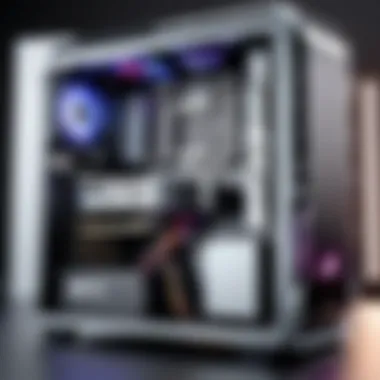
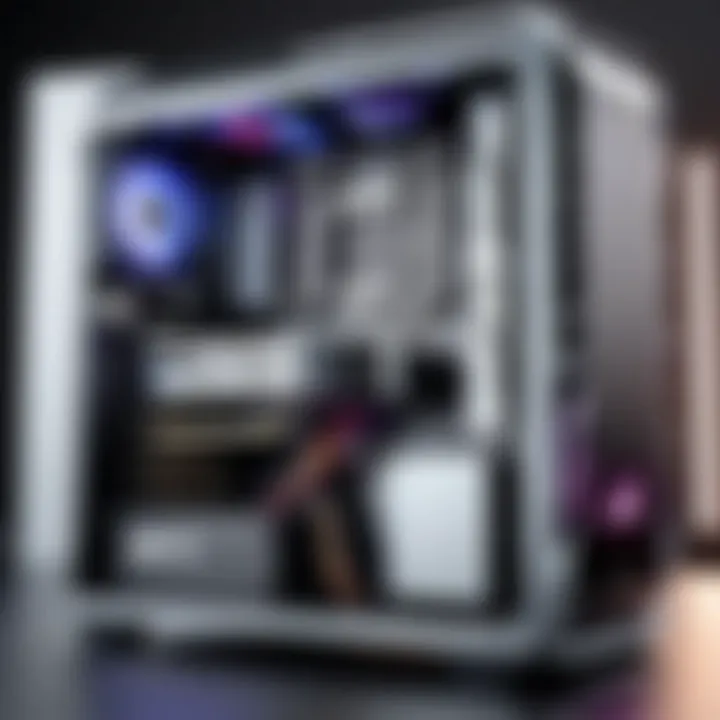
The Importance of Frame Rate
Frame rate, often measured in frames per second (fps), plays a significant role in the overall 4K gaming experience. It's not just about how many images your screen can render within a second; it's about how fluidly those images translate during gameplay.
Imagine trying to enjoy a fast-paced action game at 30 fps. The experience can feel sluggish, eerie, and almost laborious—a far cry from the smooth, responsive experience that a steady 60 fps or higher can offer. Players accustomed to heightened frame rates will find it difficult to adapt to lower frame rates, where the performance can seem like wading through mud in contrast.
Higher frame rates provide a much smoother experience and execute rapid movements with precision, making it easier to react in tight situations. With the bar set high, achieving higher fps at 4K resolution often requires sophisticated hardware capable of rendering this level of detail without hiccup.
"In gaming, every frame counts. It can mean the difference between winning and losing."
In essence, while resolution is crucial for clarity, frame rate is fundamental for performance, hence making them two sides of the same coin in the realm of 4K gaming. As enthusiasts sit down to evaluate their gaming prowess, a thorough understanding of both these aspects is integral to making informed decisions in terms of both performance expectations and financial commitment.
Components of a 4K Gaming PC
When diving into the realm of 4K gaming, one cannot overlook the crucial building blocks that come together to form a powerful gaming rig. The components of a 4K gaming PC are not merely parts; they are the very essence of what shapes your gaming experience. From the graphics card that brings stunning visuals to life, to the motherboard that connects it all harmoniously, each component plays a pivotal role.
In this section, we’ll explore the various elements required to assemble a capable 4K gaming PC, highlighting the considerations that come with each choice and their impact on performance and pricing. Understanding these components will empower tech enthusiasts and IT professionals alike to make informed decisions that align with their gaming needs and budget constraints.
Central Processing Unit Considerations
At the heart of any gaming PC lies the Central Processing Unit (CPU). The CPU is responsible for executing instructions and processing data, effectively acting as the brain of your system. For 4K gaming, you need a robust CPU that can handle the demands of high-end graphics and extensive multitasking.
When selecting a CPU, factors such as core count and clock speed matter significantly. A higher core count allows for better performance in multitasking scenarios, which is common in gaming where background processes can consume resources. Popular choices include the AMD Ryzen series or Intel’s Core i7 and i9 options, both of which provide excellent performance. Depending on your gaming and streaming needs, it may be wise to lean towards newer generations that offer improved architecture and efficiency.
Graphics Card Variability
The Graphics Processing Unit (GPU) is arguably the most critical component for gaming at 4K resolution. It’s the powerhouse that dictates how well your games will run and how beautiful they will look. In today’s market, GPUs vary widely in terms of price and performance. Understanding these differences is key to making a wise investment.
When opting for a graphics card, brands like NVIDIA’s GeForce RTX series and AMD’s Radeon RX series stand out. The former usually excels in ray tracing capabilities, while the latter offers a great price-to-performance ratio. However, as with any piece of tech, availability and market trends can drive prices up. Staying informed about these fluctuations can help you avoid paying top dollar at the worst time.
Memory and Storage Requirements
Memory and storage are two other pivotal components of a 4K gaming PC. Random Access Memory (RAM) impacts how smoothly applications run and how many tasks can be managed simultaneously. A minimum of 16GB of RAM is advisable for 4K gaming, although more demanding applications might necessitate 32GB or more.
For storage, Solid State Drives (SSDs) provide faster load times compared to traditional Hard Disk Drives (HDDs). As game files and software grow larger, investing in an SSD can enhance your gaming experience by reducing waiting times from launches to in-game pursuits. Opt for at least 1TB of combined storage to ensure you can keep your library handy without constantly juggling files.
Power Supply Essentials
The power supply unit (PSU) is often an overlooked component, yet it is vital for the stable operation of all other parts. A PSU needs to deliver the right wattage that meets or exceeds the requirements of your components, particularly with GPUs and CPUs which can draw significant power.
When selecting a PSU, consider its efficiency rating. Units rated with 80 Plus Gold or higher offer better efficiency, leading to lower electricity bills and heat output over time. Always factor in some headroom above the minimum requirements to accommodate potential future upgrades or additional components.
Motherboard Specifications
The motherboard is the glue that holds a 4K gaming PC together. It defines compatibility between all components and offers various features such as connectivity options, expansion slots, and even potential overclocking capabilities.
When choosing a motherboard, consider factors like the type of CPU socket, chipset capabilities, number of PCIe slots, and USB ports. Additionally, future-proofing your choice can pay dividends down the road. Opt for a motherboard that supports the latest standards to ensure compatibility with the future generation of components.
Cooling Solutions for Performance
Lastly, don’t underestimate the importance of cooling solutions in your build. Gaming components, especially GPUs and CPUs, generate heat—a lot of it. Effective cooling systems help to maintain optimal performance and prolong the lifespan of your equipment.
There are various cooling options available, from air coolers to liquid cooling solutions. For many gaming setups, a high-quality air cooler suffices, but liquid cooling can provide enhanced cooling performance and quieter operation, albeit at a higher cost. Assess your build’s needs and pick a suitable cooling solution designed for the workloads you expect to place on your machine.
Remember: Each component impacts not only the price but also the overall gaming experience. Carefully consider how these components work together to reach your 4K gaming dreams.
Cost Breakdown of 4K Gaming PCs
Understanding the costs associated with 4K gaming PCs is quintessential for anyone considering a purchase or build. The expense surplus involved can significantly impact choice and, thus, overall gaming satisfaction. By dissecting the financial components, we can gain clarity on how to allocate budgets effectively and make informed decisions. The cost breakdown serves as a blueprint, ensuring that tech enthusiasts and professionals alike can maximize their investments while navigating the often murky waters of high-performance gaming setups.
Budget Range Options


When it comes to budget options for 4K gaming, they generally span three main categories:
- Entry-level systems: These systems are often suited for those who are new to gaming or have moderate usage requirements. Expect to spend around $800 to $1,200. While they provide a taste of 4K, compromises may be required on graphics settings.
- Mid-range options: Ranging from $1,200 to $2,000, mid-range setups typically feature better graphics cards and processing power. Users at this level can enjoy decent performance with high settings, making gaming more immersive.
- High-end setups: If you’re aiming for the crème de la crème of gaming experiences, a budget of $2,000 and beyond is essential. These machines come equipped with the latest technology, processing power, and storage options. With no holds barred, gamers can relish fluid gameplay and maxed-out settings without breaking a sweat.
The cost within each of these brackets can encompass a blend of components including but not limited to the CPU, GPU, memory, and cooling solutions. By clearly defining your needs and budget, you’re more likely to hone in on a configuration that specifically serves your gaming aspirations.
Evaluating Entry-Level vs. High-End Systems
A significant concern for gamers often revolves around entry-level versus high-end systems. Entry-level systems typically offer a balanced performance for less demanding games or settings. However, the experience might leave much to be desired if you’re after fast-paced action and graphical fidelity. Analogous to trying to run before you can walk, investing in a low-end build may lead to an underwhelming experience when attempting to push 4K graphics.
In contrast, high-end systems are akin to strapping rockets to an already fast car. Not only do they accommodate the latest games with ease, but they future-proof your setup for upcoming advancements in gaming technology. This level of investment often comes with added benefits such as faster load times, superior frame rates, and ultimately, a more gratifying experience.
Furthermore, it’s crucial to understand the relevance of VRAM and processing speed, as they are often bottlenecks in both categories. As a general rule, if 4K gaming is a priority, steering clear of entry-level systems is advisable; they may fail to harness the full potential of 4K technology.
Cost of Components Explained
Delving into the specifics, the cost of components can vary widely and is foundational to the overall expenditure of a 4K gaming PC. A basic breakdown may look something like this:
- Graphics card: This is arguably the heart of your gaming rig. Prices range significantly—budget cards can be found around $200-$300, while top-tier models can reach upwards of $1,500.
- Central Processing Unit: A strong CPU is necessary for handling complex calculations. Expect to pay anywhere from $200 for entry-level CPUs to over $800 for high-end options.
- Memory (RAM): Adequate RAM—ideally 16GB or more—is critical for smooth multitasking. This typically costs between $50 to $150 depending on speed and capacity.
- Storage: Choosing between HDD and SSD affects both price and performance. SSDs, usually preferred for their speed, can add a significant cost bump, ranging from $100 to $500.
- Motherboard and PSU: These components further contribute to overall costs, averaging $100 to $300 for motherboards and about $50 to $150 for power supplies.
With the perpetual evolution of component technology, it’s advisable to stay on top of market shifts, as prices can cause budget surprises. Keeping an eye out for alternative brands and sales can also yield significant savings, allowing you to stretch your dollar while retaining quality functionality.
"Understanding the cost dynamics of each component helps prevent overspending on parts that may not yield a proportional increase in performance."
A methodical approach to budgeting and evaluating these components is essential for achieving a reasonable cost breakdown while still securing the quality necessary for a satisfactory 4K gaming experience.
Building vs. Buying: Cost Implications
When it comes to acquiring a 4K gaming PC, one of the most significant decisions to make is whether to build your system from scratch or buy a pre-built one. Each option comes with its own set of cost implications, potential benefits, and considerations that can heavily influence your overall gaming experience.
Building a PC might seem daunting at first glance. Many might think it's akin to assembling a complex puzzle. Yet, it offers a level of customization that's hard to beat. You can handpick each component based on performance needs and budget constraints, which often turns out to be cheaper than buying a pre-assembled rig. With a custom build, you decide what a good balance of performance and price looks like for you. You also have control over upgrades in the future, allowing for a tailored lifespan for your system.
However, let’s not ignore the time investment. Building a PC requires research, careful planning, and hands-on effort. If you're not tech-savvy, the learning curve can be steep. Sometimes, the harmony of choosing parts can lead you to lose sight of the bigger picture if not done correctly. Not to mention, assembling something incorrectly could lead to additional costs in repairs or even part replacement.
On the other hand, buying a pre-built gaming PC provides immediate access to a system that’s ready to go right out of the box. For those who just want to jump into gaming without the hassle of choosing individual parts, this is an attractive option. With pre-built systems, the manufacturer often offers warranties and support that can be quite handy if things go awry. You don’t have to worry as much about compatibility issues, which can sometimes puzzle even the more experienced builders.
At the same time, pre-builts can come at a premium price for the convenience they offer. It’s not unusual to see a markup for just the assembly and brand name on a pre-built system, which can lead to buyers missing out on optimal performance for their budget. Furthermore, limited customization options in pre-builts can mean settling for components that might not meet personal preferences or future needs.
In short, whether you decide to build or buy, weigh these considerations carefully:
- Customizability: Building gives you more control; pre-builts offer convenience.
- Price: Custom builds usually turn out cheaper; pre-builts may carry a premium.
- Time Investment: Building takes time and effort; pre-builts are ready to use immediately.
- Support and Warranty: Pre-builts often come with manufacturer support; builders rely on community resources.
Choosing the right route boils down to priorities, knowledge, and willingness to engage in the process. As you consider your options, let’s take a closer look at the advantages of custom builds.
Advantages of Custom Builds
One of the foremost advantages of building your 4K gaming PC is the ability to tailor every single component. This means not just choosing based on power but also on your specific gaming preferences and futureproofing needs. Having this level of specificity can reduce long-term costs since you’re not locked into more expensive parts you don't actually need.
Moreover, custom builds often provide flexibility when it comes to upgrading in the future. If you start with a powerful graphics card but later decide to enhance your processor for better performance in new titles, you can replace components individually without having to buy an entirely new system.
To put it simply, a custom build allows for:
- Cost Efficiency: Assemble a system that matches your wallet while meeting your gaming needs.
- Increased Performance: Select high-end components that are specifically suited for 4K gaming.
- Better Knowledge: Engaging in the build fosters a deeper understanding of how each part interacts. This can be invaluable for troubleshooting and optimization down the line.
Pre-Built Platforms Analysis
When examining pre-built platforms, it’s critical to understand who your manufacturer is and what they offer. Big names like Alienware, HP Omen, or MSI provide robust options that usually come outfitted with decent components. However, these brand-name products may also include costs that are not immediately apparent to potential buyers.
Consider the following points in your analysis of pre-builts:
- Price Markup: Algiven the reputation of the brand, you're likely paying more for the "name." Make sure to compare specifications across different brands.
- Component Quality: Sometimes, manufacturers cut corners using generic or lower-quality parts in their builds to keep costs down. Research the exact components to ensure reliability and performance.
- Technical Support: Most manufacturers provide decent warranty and tech support, but can differ in responsiveness. Search for reviews and ratings to gauge their customer service.
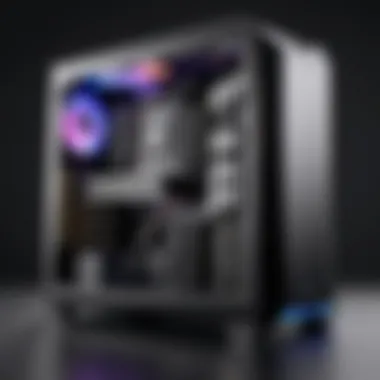
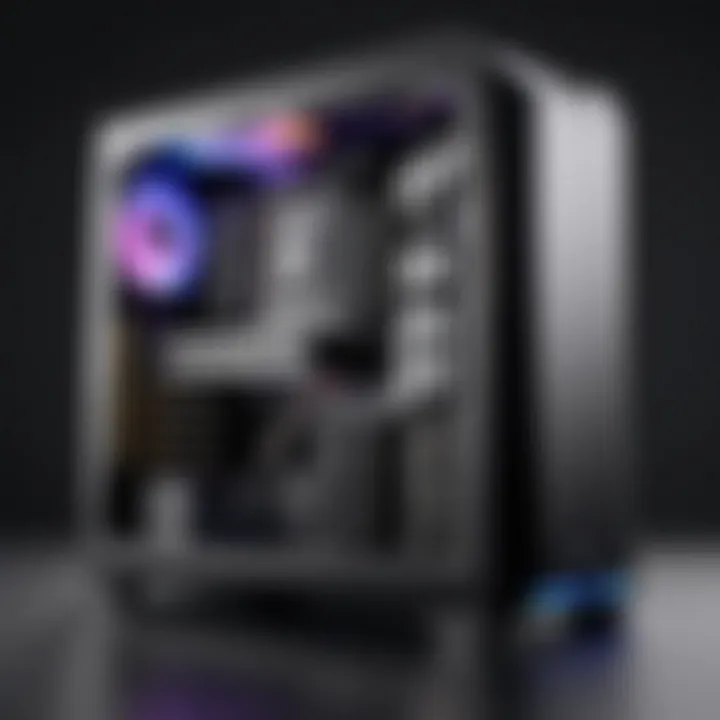
While the convenience factor of getting a pre-built machine cannot be overlooked, scrutinizing the specifications, price points, and reviews can go a long way in ensuring that you are making a well-informed purchase that meets your needs.
Additional Factors Influencing Cost
When embarking on the journey of assembling or purchasing a 4K gaming PC, several elements can significantly sway the overall cost beyond the basic components. Recognizing these additional factors not only helps in budgeting but also enhances the decision-making process for tech enthusiasts and IT professionals alike.
Market Trends and Availability
The landscape of the 4K gaming industry is ever-changing, driven by technological advancements and market dynamics. Events like product launches from major manufacturers can create spikes in demand, leading to increased prices.
- Demand and Supply: If a new graphics card is launched and gains popularity, the existing stock may dwindle quickly. Consequently, prices for older models can surge due to scarcity.
- Geopolitical Factors: Trade policies, tariffs, or regional constraints can directly affect the availability of components, often inflating costs unexpectedly. For instance, a rise in tariffs on semiconductor imports can ripple through to the end-user in the form of higher prices.
Additionally, during holiday seasons or significant gaming events, the demand often skyrockets. This results in retailers increasing prices to maximize profits on high-demand products. Therefore, if one plans to build or buy a PC, timing can have a pronounced impact on costs.
"Understanding the market rhythms is key; buying components in quieter times can yield significant savings."
Future-Proofing Considerations
Future-proofing a 4K gaming PC involves selecting components that not only meet today’s benchmarks but are also capable of handling upcoming technologies. This foresight often comes at a premium, but it can save tech enthusiasts from needing an entire overhaul in the near future.
- Invest in Higher Specs: Opting for top-tier CPUs and GPUs, like AMD Ryzen 9 5900X or NVIDIA GeForce RTX 3080, ensures a better ability to adapt to future games that may require more intensive specifications.
- RAM and Storage: Given the increasing accessibility of large game files and resolution demands, investing in higher RAM (16GB or more) and faster storage solutions (SSD over HDD) can dramatically affect performance longevity.
- Upgrade Path Considerations: Some motherboards allow for a broader range of upgrades down the line, which means that while an initial investment may be hefty, it can offer a viable upgrade path that keeps pace with evolving technology.
The essence of future-proofing boils down to balancing immediate costs against potential savings in upgrades and increased usability, which can justify the higher upfront cost.
Maximizing Value in 4K Gaming
Maximizing value in the realm of 4K gaming is more than just a balancing act; it represents the delicate interplay between performance and budget. For many tech enthusiasts, the allure of 4K gaming is not just about having the latest components but rather about achieving that sweet spot where high-quality visuals meet financial prudence. As gaming technology evolves, understanding how to extract the most bang for your buck can significantly enhance the overall experience while keeping costs manageable.
Understanding this dynamic is vital for both the inexperienced who are setting foot into 4K gaming and seasoned veterans looking to upgrade their machines without breaking the bank. Performance often requires investment, yet it’s crucial to know where those investments yield the most impact.
Balancing Performance and Budget
When discussing the balance of performance and budget, one must consider several layers of complexity. Initially, one might be tempted to splurge on cutting-edge components, envisioning an unblemished gaming experience. However, splurging on every single part is like pouring all your savings into a luxury yacht without considering upkeep.
To effectively balance performance with budget, it’s crucial to allocate your funds thoughtfully:
- Focus on Key Components: The graphics card often steals the spotlight, and rightly so; it transforms the gaming experience. But don't forget about other essentials like the CPU, which plays an integral role in overall performance.
- Prioritize Resolution Over Refresh Rate: While a 144Hz monitor sounds enticing, 4K clarity can sometimes take precedence. Opting for a monitor that prioritizes 4K resolution could greatly enhance image quality.
- Evaluate Component Compatibility: An expensive GPU paired with a mediocre CPU won’t get you far. Ensure that your part selections are compatible and performance-matched.
Users who don't mind doing a bit of research can genuinely find value in products that are either just a generation behind or on sale—these often deliver stellar performance without the premium prices.
Selecting Essential Features
When selecting features for a 4K gaming setup, the focus should lie on essentials that directly enhance the gaming experience. Wading through the deluge of available options can be a daunting task, but concentrating on what’s necessary rather than what’s flashy can streamline the process.
Several features stand out as must-haves:
- Quality of GPU: This cannot be emphasized enough. Invest in a reliable GPU that handles 4K resolutions effectively. Look towards the likes of NVIDIA's GeForce RTX series or AMD's Radeon RX line for better performance.
- Sufficient RAM: At least 16GB of RAM is recommended, as this amount supports smooth gameplay, especially in complex environments.
- Fast Storage Solutions: An SSD is becoming a standard feature in gaming PCs. Not only does it decrease load times significantly, but it also ensures a more responsive system.
- Effective Cooling Mechanism: Overheating can be a gamer’s nightmare; investing in a good cooling system keeps components running effectively and prolongs their lifespan.
"Success in 4K gaming isn’t just about the technology; it’s about making smart, educated decisions that enhance both experience and investment."
With thoughtful choices, gamers can navigate the complexities of building or buying a system that not only meets but exceeds their expectations.
Culmination
In reflecting on the cost dynamics associatd with 4K gaming PCs, it becomes apparent that understanding this landscape isn't just beneficial—it's essential for making informed choices, especially for IT professionals and tech enthusiasts who wish to navigate the sometimes overwhelming options available. The analysis provided throughout this article showcases that the investments made in components are not merely numbers on a page but rather have direct implications on overall gaming experience, performance longevity, and future-proofing against an ever-evolving technological environment.
Summary of Key Insights
Several crucial insights stand out from our discussion:
- Component Quality Matters: Different components, like CPUs and graphics cards, influence the overall performance and, hence, the gaming experience. Investing in higher-quality parts can lead to a more satisfying and seamless experience.
- Market Trends Affect Prices: Fluctuations in market availability can lead to unexpected price changes. Staying informed about these trends is vital for budgeting effectively.
- Custom vs. Pre-Built: Weighing the pros and cons of building your own rig versus buying pre-built systems can save dollars while delivering the desired level of performance.
- Budget Flexibility: Recognizing that each user's requirements vary can guide purchasing decisions—whether it's skipping on certain extras or splurging on a top-of-the-line graphics card.
These insights underline the importance of a thoughtful approach to assembling or purchasing a 4K gaming rig. A methodical consideration ensures that enthusiasts not only maximize their investment but also enhance their overall enjoyment of gaming.
Future Considerations for 4K Gaming
As we look to the future of 4K gaming, several factors loom large. Advancements in technology will continue to redefine what is possible. For instance, as newer GPUs are released, reliance on older technology might become less feasible, suggesting a bi-annual or annual review of systems might be a ticket to success. Further, upcoming developments in gaming engines and optimization techniques promise even richer experiences, however, they will need more robust hardware support.
It's also worth noting that as cloud gaming platforms gain traction, the debate on hardware investment might shift drastically. While traditional consoles and PCs will likely retain their audience, understanding where the industry is headed will offer immense strategic advantage for gamers looking to extend the longevity and relevance of their setups.



